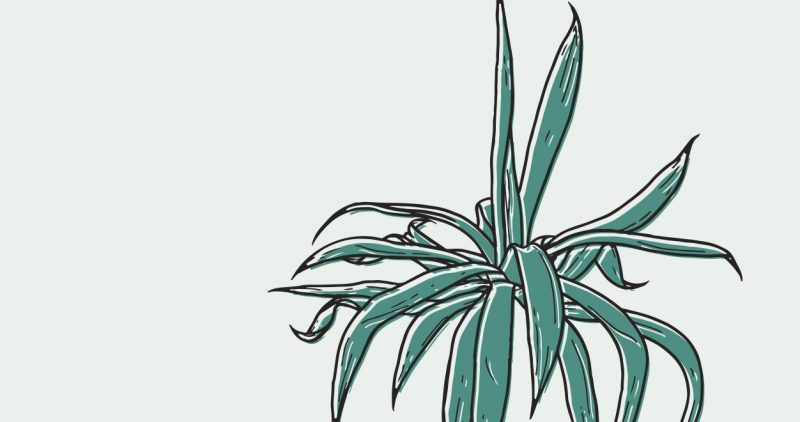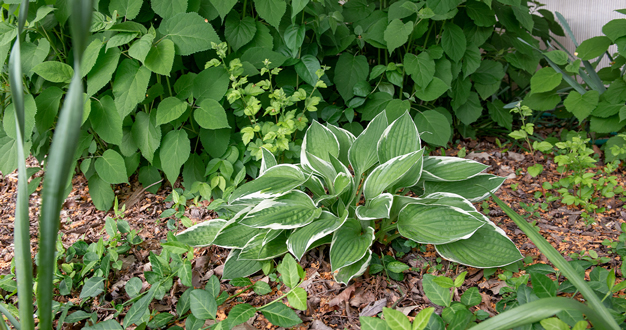
Monstera deliciosa is a whole different kind of houseplant experience. It’s a wanderer – never content to stay in just one location or assume just one shape. It’s forever heading off in odd directions, searching for whatever it is a monstera needs to be happy. A better view? More support? Simple curiosity? It’s hard to tell, but it all starts with the plant’s native home in the rainforests of central America, and it’s that nomadic restlessness that gives the plant its charm. And of course, there’s also that gorgeous leaf.
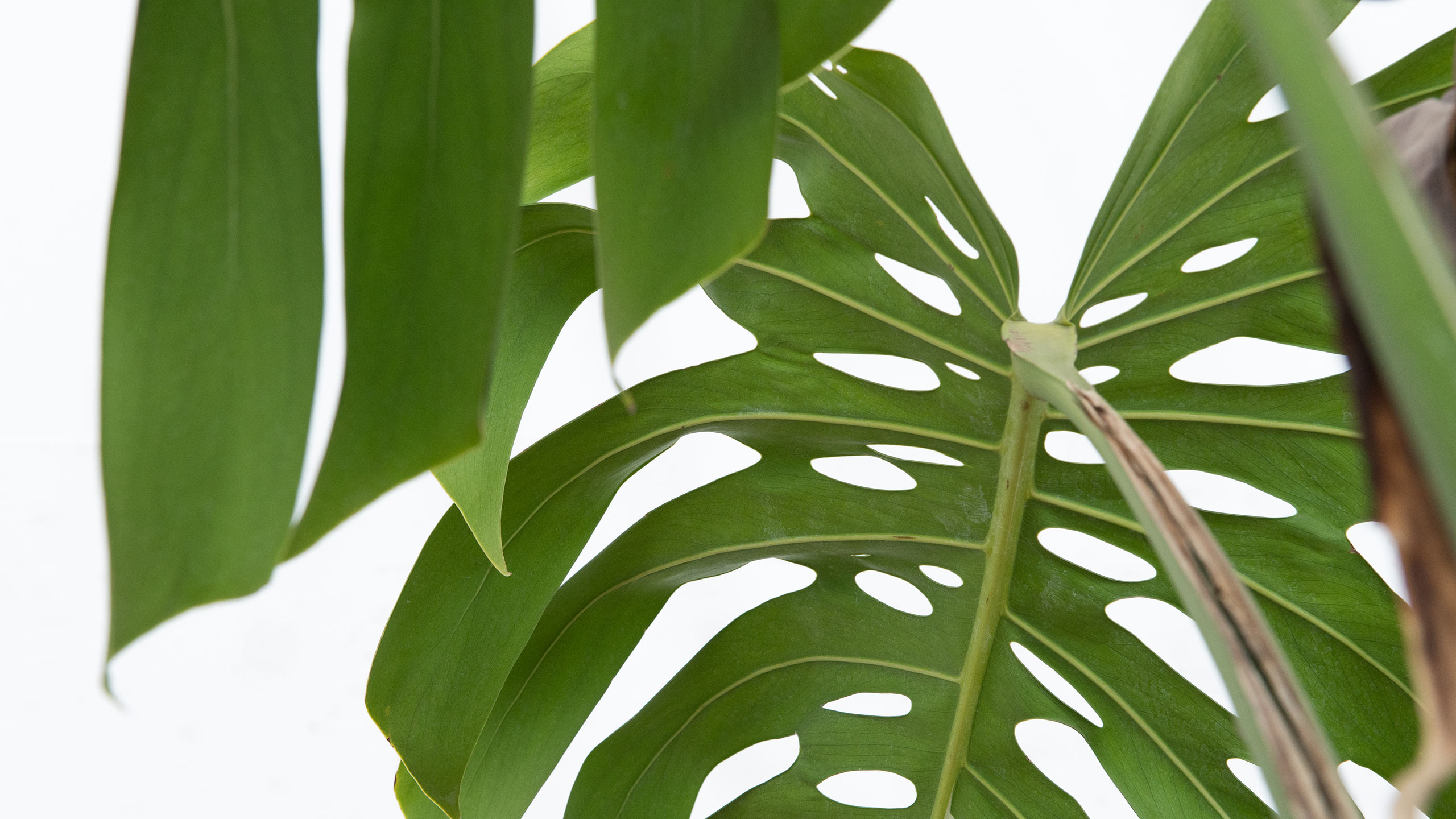
Tropical Origins
Monstera deliciosa is an epiphytic, vining plant in the family Araceae, and although it’s no longer the case, monsteras were once included in the same genus as philodendrons. So, don’t be confused if you see the common name “swiss cheese philodendron.” Of course, the common name has nothing to do with whether we can eat it. In fact, the leaves, stems, and unripe fruit contain toxic oxalic acid and will cause painful irritation to the mouth and throat if consumed. The ‘deliciosa’ part of the species name, however, refers to the fact that the mature fruit is actually very tasty – only when it’s completely ripe and not before. But in the home, monsteras rarely flower or fruit.
That Famous Leaf
The swiss cheese common name actually refers to those characteristic lobes and holes that monstera leaves display as the plant grows older. In the botanical world, these “splits” and “windows” are called fenestrations. Juvenile monsteras don’t have them, but as the plant matures, new leaves begin to show the pattern.
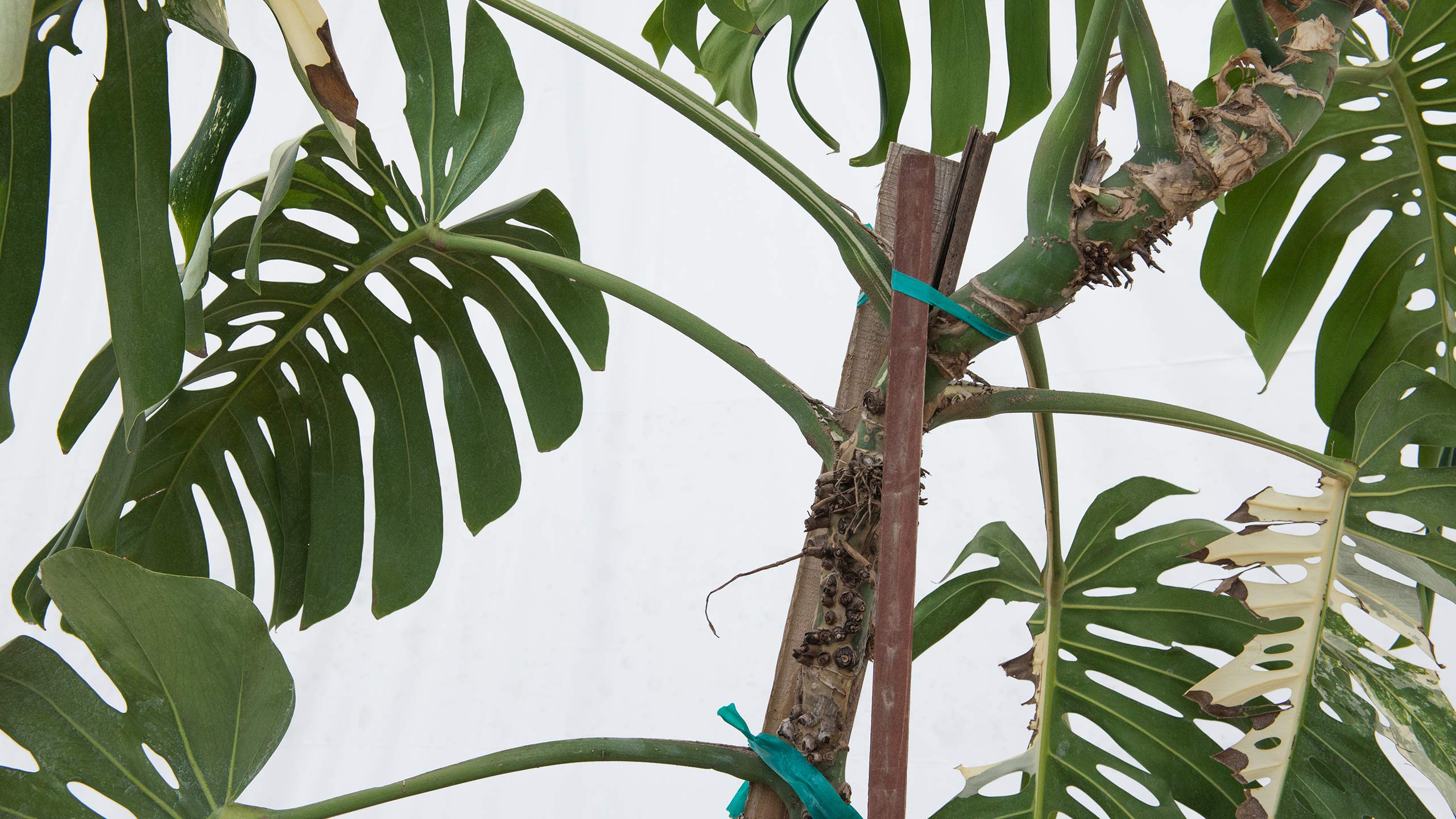
A Natural-Born Wanderer
The monstera’s wondering habit begins early in its life as a seedling on the floor of a lush tropical forest. Young monsteras naturally grow toward areas with the deepest shade until they find the upright trunk of a large tree, which they’ll begin to climb using strong aerial roots. At this point, the maturing plant stops looking for darkness and starts searching for sunshine, climbing higher into the forest canopy. In our homes, monstera continues this ingrained need to explore its surroundings, searching for something to hold onto and for just the right amount of light. As a result, monsteras take on very random, yet interesting shapes as they grow.
Ways to Train It
This exploratory behavior makes owning a monstera something of an adventure. Some plant parents make accommodations by supporting heavier branches with plant stakes. Others decide to train their wandering plant to follow a more controlled route around a moss pole or a metal obelisk. You can make a moss pole by wrapping long-strand sphagnum moss around a wooden pole and securing it with fishing line. Or another technique includes rolling chicken wire into a tube, filling the tube with sphagnum moss, and anchoring the tube into the pot with a plant stake. Carefully tie the monstera branches to the pole until the plant latches on with its own aerial roots. If you’d like to use a metal obelisk for a support, it’s best to insert the obelisk into the pot while the plant is still relatively small. Introducing an obelisk to an already lengthy plant is a bit of a challenge – some gentle wrestling and patience is involved – but it’s possible. You can also trim your monstera if an errant branch just refuses to follow your suggestions.
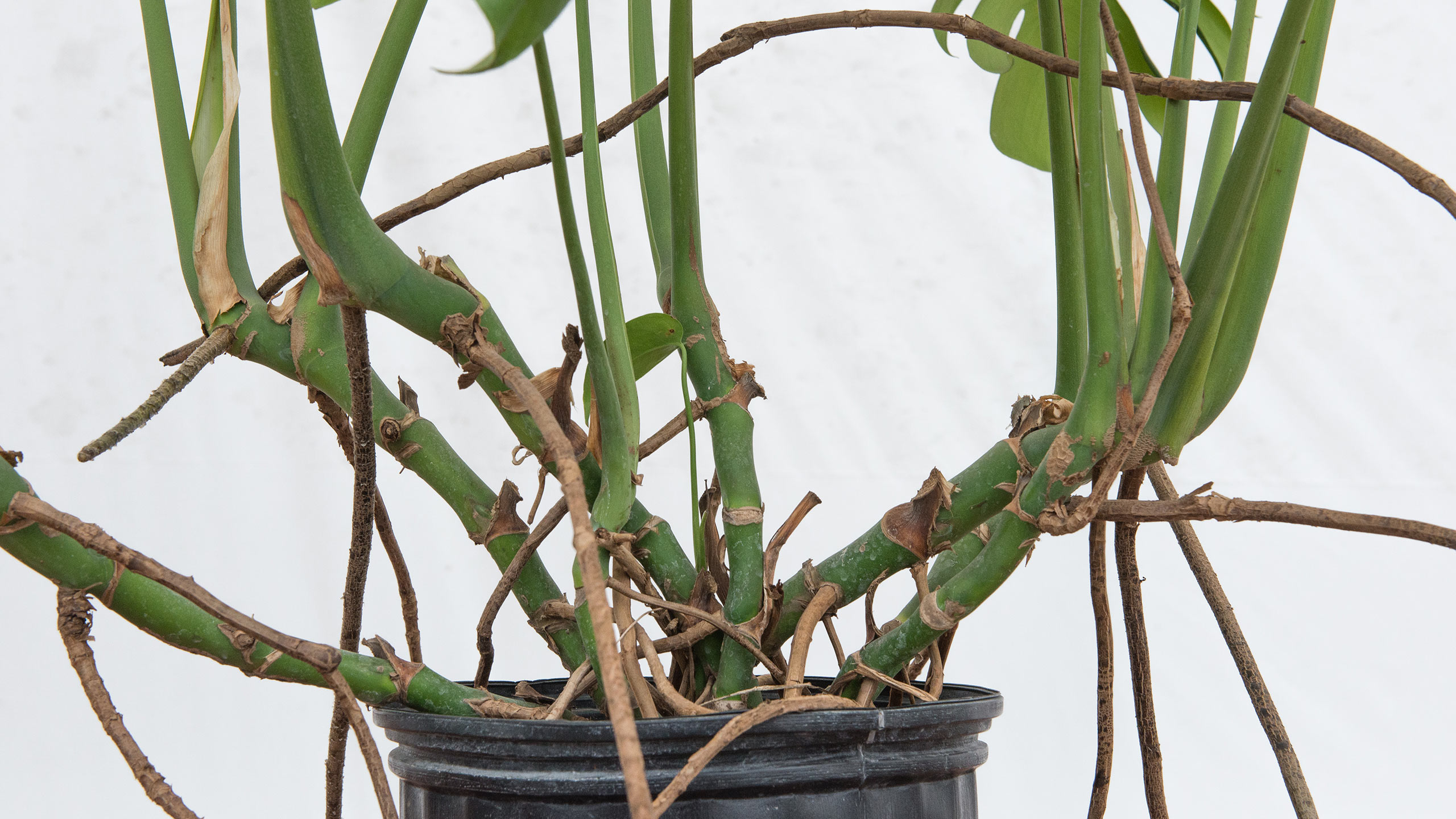
Easy Light + Water
Like many houseplants, monstera likes bright, indirect light. You’ll want to water your monstera thoroughly then let the potting mix dry about half way down before the next watering. If your monstera is climbing a moss pole, be sure to water the moss too so the roots are encouraged to use it. Monstera prefers warm temperatures and higher humidity than you find in a typical home, but it’s also adaptable. Under less-than-ideal conditions, it may not grow as much – but depending on your viewpoint, this might not be such a bad thing.
Try One for Your Collection
We love our monsteras – and once one of these big beauties wanders its way into your heart, we think you will too. As always, if you need plant ties, sphagnum moss, or advice, just stop by the Greenhouse to talk with one of our team members. We’re always happy to help.


